Miles Vining
Editor’s note: This is the second part in a series examining the arms and equipment employed by the Iraqi Special Operations Forces, in light of the prominent role played by this unit in recent fighting. Part 1 (personal equipment) is available here.
Although the suicide vehicle-borne improvised explosive device (SVBIED) threat from the so called Islamic State against Iraqi forces remains at an all-time high, one of the leading cause of casualties that the Iraqi Special Operations Forces (ISOF) are suffering is from Islamic State marksmen who are carrying out deadly attacks within the dense urban centres that have characterised much of the fighting. To both combat this threat, and to provide a longer-range small arms support capability, ISOF has been integrating various precision rifles and appropriate tactics into their overall force structure. This has primarily taken place at the platoon or company level of operations. Due to the nature of the fighting in Ramadi, Fallujah, and Mosul, ISOF routinely find themselves conducting military operations in urban terrain (sometimes known as MOUT, or fighting in built-up area; FIBUA). Unlike more traditional military sniper operations that exploit relatively open or mountainous terrain with very long target engagement ranges, ISOF snipers or marksmen are working in limited-range urban environments, quickly moving with the flow of battle in support of infantry operations.

Figure 1.1 ISOF snipers receive training from U.S. Special Forces advisors before going into combat in Iraq. Much of the force’s specialised training such as precision marksmanship and the employment of forward observers has been designed and delivered by U.S. Special Forces.
The organisation and training of snipers in ISOF comprises a series of formal sniper courses that select, experienced ISOF soldiers attend, some of these having been taught by US Army Special Operations personnel (US Army SF Groups have been instrumental in the development of ISOF Tactics, Techniques, and Procedures since the CTS creation in the mid-2000s). Courses focus on precision shooting ability, mainly using US surplus Remington M24 and Russian Orsis T-5000 bolt-action sniper rifles that are currently in service. After a shooting package it appears that there is some instruction on concealment and camouflage, including classes on producing and customising ghillie suits and the practical application of these. When actually used in combat, ISOF snipers tend to forgo the ghillie suit to maintain tactical agility. Several ISOF ‘snipers’ on the battlefield may not have undertaken these courses, however. This may include personnel replacing wounded or killed snipers under operational conditions.
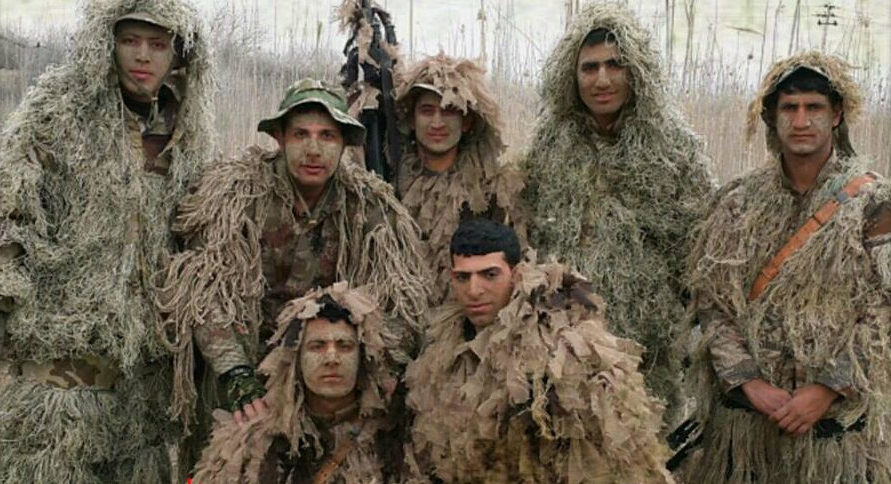
Figure 1.2 Although Ghillie suits has been seen in training settings, the majority of ISOF snipers operating in urban battlefields appear to forgo the camouflage outfits in favour of increased mobility.
While on operations ISOF snipers either support their platoons as organic assets (what may be considered ‘sharpshooters’ or ‘designated marksmen’ in many western militaries), or operate in shooter-spotter teams as per traditional sniper teams in many other armed forces. These teams employ a spotting scope with the spotter in close proximity to the shooter with the long gun, most of the time concealing themselves in a room or behind a wall. Often existing damage to walls is utilised or modified to serve as shooting ports, or ‘loopholes’. Some 25-50 percent of precision rifles currently in inventory appear to be painted to blend in with their urban surroundings. Another popular technique among ISOF snipers is to wrap the front portion of their rifles with a tan coloured fabric or twine helping the handguard and barrel to blend in with the outside of a building or wall that is being used for cover. Although many of the precision rifles in use by ISOF were designed for accurate engagement of point targets out to 800 meters and beyond, the MOUT fight that ISOF is entrenched in is commonly presenting targets of opportunity no further than 400-500 meters distant.
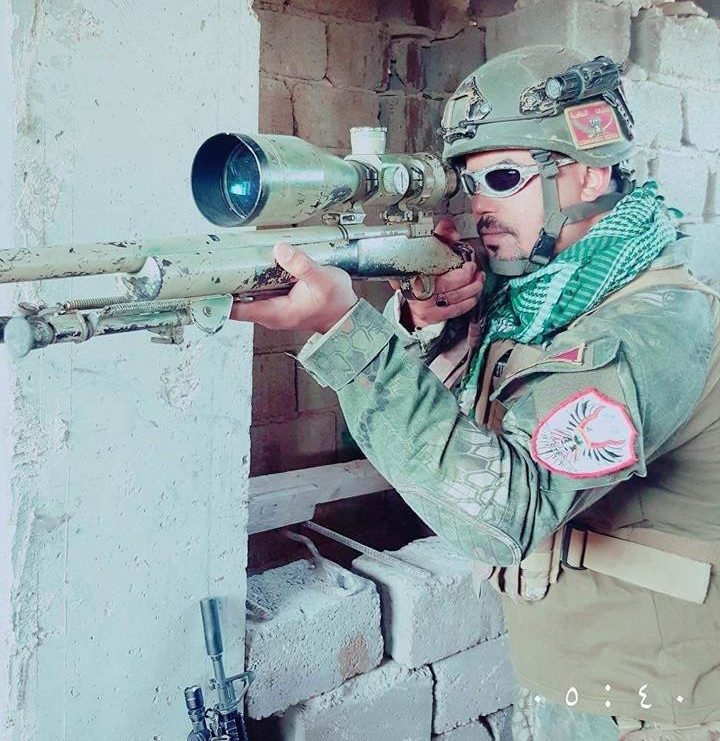
Figure 1.3 This ISOF sniper has spray painted his M24 rifle to better blend with his surroundings. Note the ATN 4-12x 80 mm DNS-CGT day/night optic. In addition, his uniform is not a standard issue black, or digital Chinese PLA Type 07 “arid” pattern, but rather a commercially produced uniform produced in a Kryptek pattern. Notice his secondary weapon, Likely a SIG Sauer M400 self-loading rifle, leaning against the wall next to him.
The secondary mission set that ISOF snipers and spotters have is as an intelligence, surveillance, and reconnaissance (ISR) asset to the total ISOF force. The vast majority of snipers are equipped with commercial hand-held radios as well as US-supplied AN/PRC-152A (Harris Falcon III) handheld radios. Communication systems facilitate the coordination of movements and orders between supported units. When these devices are coupled with the rifle scopes, spotting scopes, and issued binoculars, they enable ISOF snipers to conduct ISR missions whilst monitoring the enemy.

Figure 1.4 Notice the AN/PRC-152 radio on this ISOF sniper’s back, supporting his role as an ISR asset, by enabling him to ‘call in’ targets and monitor enemy activity. He is armed with an M24 SWS fitted with a ATN 4-12x 80 mm DNS-CGT optic, also spray painted for camouflage.
In addition to a precision rifle, ISOF snipers are usually armed with a secondary weapon system. Sometimes this is the standard-issue Rock River Arms LAR-15, or Sig Sauer M400, both chambered for the 5.56 x 45 mm cartridge. This weapon is frequently slung on a sniper’s body when engaging or otherwise operating the precision rifle. If the primary shooter doesn’t have a carbine on hand, usually his spotter will be armed with one. The shooter may also be armed with a Croatian 9 x 19 mm HS Produkt HS2000 handgun, either in a hip-mounted or thigh-mounted Black Hawk! SERPA holster, or a counterfeit copy of such. In addition there has been some usage of long rifle ‘drag bags’ that snipers wear on their backs like a backpack or carry. These are important so as to not identify the snipers while on operations allowing them a greater opportunity to ‘blend in’ with a typical ISOF platoon.
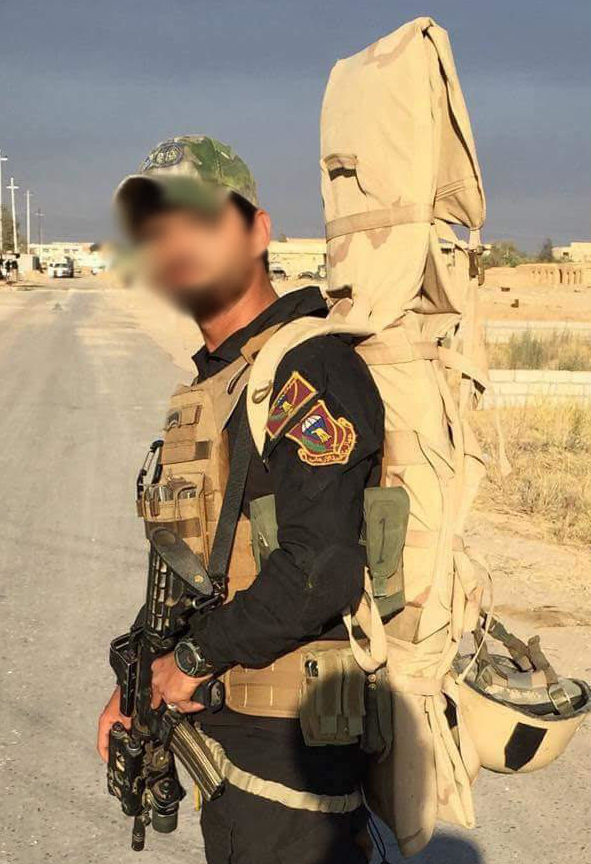
Figure 1.5 With his sniper rifle in a drag bag carried on his back, this sniper holds what appears to be a SIG Sauer M400 self-loading rifle fitted with an ATPIAL AN/PEQ-2A, an EOTech 552 holographic sight, and a rail-mounted flashlight as his secondary weapon system.
Primarily the ISOF precision rifle inventory consists of the Remington Arms 7.62 x 51mm NATO M24 Sniper Weapon System, as adopted by the US Army. The US Army had over 15,000 such rifles in use from 1988 to 2010. The M24 SWS underwent a major upgrade in 2010, being replaced by the M2010 Enhanced Sniper Rifle. Surplus M24 SWS models have since been sold or gifted through Foreign Military Sales and similar programmes to US allies such as Iraq and Afghanistan. The current M24 SWS in use by ISOF snipers is US Army surplus. Most of the examples seen in Iraq appear to originate with the original M24 SWS contract issued in the 1980s, and not the upgraded M24A2 or M24A3 versions that were later acquired by the US Army. The majority of the important M24 SWS accessories and parts are still intact. This includes the folding 1A2-BRM Harris bipods, M1907 leather sling, and what appears to be the 3.5-10x 40 mm Leupold Mark 4 scope with a Mil-Dot reticle. Limited numbers of rifles are instead fitted with fixed power 10x 40mm Leupold Mark 4 models as the original 1988 US Army contract stipulated. Although many of the Harris bipods are still in working and operational order, some of the M1907 leather slings have been replaced by locally-imported tactical slings from China. Within ISOF the M24 SWS is colloquially known as the “Remington” and is very well liked.

Figure 1.6 The majority of the battles that ISOF has participated in have been fought over urban terrain that encourage maximum usage of cover and concealment. This sniper is armed with an M24 SWS, in its original black finish. Notice that he has switched out the leather sling for a synthetic sling.
Two other scopes have been seen in use on the ISOF M24 SWS rifles. The first and more prevalent one is the VARCO, INC (later Litton) AN/PVS-10 8.5x magnification day/night sight. This is 1990s era third generation infrared technology, no longer in US military service. The AN/PVS-10 can be configured to be used during daylight settings or with the infrared option configured by simple switch, allowing ISOF snipers to have one scope that is applicable during both day and night. It is powered by two AA batteries which are plentiful in Iraq. The AN/PVS-10 is readily identifiable by the bulbous main tube, battery pack, and adjustment turrets, with a short ocular lens.
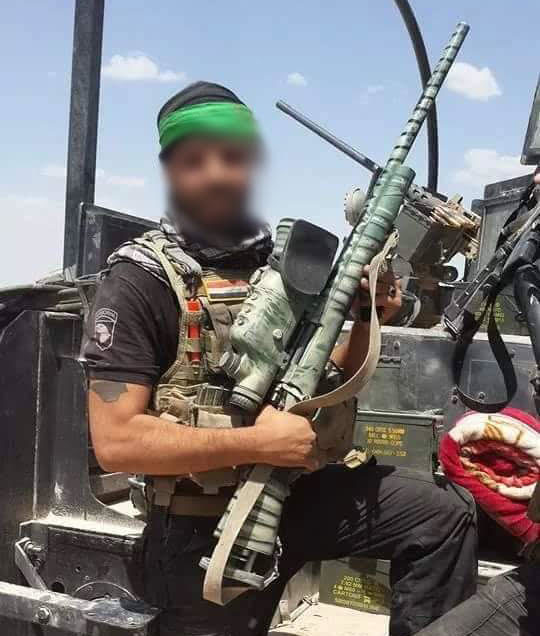
Figure 1.7 This ISOF sniper carries an M24 SWS fitted with an AN/PVS-10 optic. This optic, whilst heavy, can be used under day and night (NV) conditions while maintaining the same zero. Note the 101st Airborne Division insignia on his right shoulder.
The other scope in use with the M24 SWS is the ATN 4-12x 80 mm DNS-CGT day/night optic. Made by American Technologies Network Corps (ATN), the product was an unsuccessful attempt to combine infrared technology with a traditional rifle scope by way of an ocular assembly that can be easily switched out. It was sold commercially and on military markets in the early 2000s but has since been discontinued from the current ATN catalogue. It appears that ISOF snipers either didn’t receive or have lost/not used the infrared eyepiece as the author has not seen a single such unit in use on ISOF precision rifles. The infrared attachment uses a single CR123 battery but it must be perused with the scope to function as intended. This scope is easily identified by the substantial size of the 80 mm objective lens, a bulbous ocular lens, and a 40 mm main tube body with corresponding scope rings.
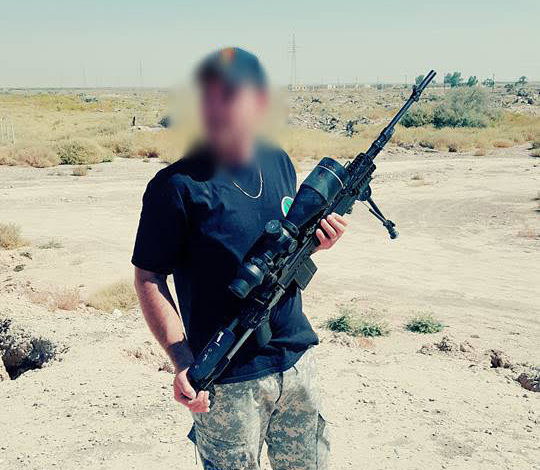
Figure 1.8 The sizeable ATN 4-12x 80 mm DNS-CGT optic is shown here mounted to an M14EBR-RI self-loading precision rifle. Similar to the AN/PVS-10, the ATN 4-12x 80 mm DNS-CGT is becoming increasingly less commonplace in operational usage with ISOF snipers.
After the M24 SWS, the M14 EBR is the second most common precision rifle used by ISOF snipers. The Enhanced Battle Rifle was a product improvement program based on existing select fire 7.62 x 51 mm NATO M14 rifles held in stores by the US military. By switching out the wooden stock for a ‘chassis’ system with a telescoping stock with adjustable cheek piece, and a body made out of aluminium and fitted with MIL-STD-1913 (Picatinny) rail capabilities, the M14 EBR was repurposed as a designated marksman rifle (DMR). It was adopted by the US Navy as the MK 14, the US Army as the M14 EBR, and the US Marine Corps as the M39 EMR. Over 6,000 M14 EBRs were produced at Rock Island Arsenal for Army infantry troops in Afghanistan and Iraq in the early 2000s. Current ISOF M14 EBRs most likely come from this production lot of 6,000 Rock Island Arsenal reconfigurations, designated the ‘M14EBR-RI’. Although reliable, some ISOF soldiers have observed these are less accurate than either the M24 SWS or the Russian Orsis T-5000. This is no doubt true, however the semi-automatic M14 EBR was designed to fill a different tactical role (DMR vs sniper role). Additionally, it seems that most ISOF snipers are using standard 7.62 x 51 mm ball cartridges instead of M118LR match grade ammunition. These M14 EBR rifles are mostly issued with the variable power Leupold optics that are also seen on the M24 SWS, in addition to some ATN 4-12x80mm DNS-CGT day/night scopes. It is also issued with a standard forward grip mounted on the Picatinny rail, and uses a variety of slings. The M14 EBR is currently the only semi-automatic precision rifle system that is in use by ISOF forces.

Figure 1.9 Although the M14 EBR offers semi-automatic capability, some ISOF members have a stated preference for the bolt-action M24 SWS or Orsis T-5000, largely due to their superior accuracy and light weight. However it does offer a good squad-level designated marksman capability and has a collapsible stock for increased manoeuvrability in urban terrain.
ISOF snipers are also armed with the Russian Orsis T-5000. Manufactured in Moscow at Promtechnologies Group’s ORSIS1 rifle factory, the T-5000 is produced in three different calibres: 7.62 x 51 mm (.308 Winchester), .300 Winchester Magnum, and .338 Lapua Magnum. All examples of the rifle seen in ISOF service are chambered for the 7.62 x 51 mm cartridge. The T-5000 is a bolt-action, magazine-fed precision rifle featuring a skeletonised chassis with an adjustable folding stock. The rifle takes a 5 or 10 round magazine, is equipped with a Harris bipod or an imitation of one. The T-5000 initially started appearing in Iraq around March of 2014 after a sizeable arms deal between the Iraqi and Russian governments took place. According to unconfirmed reports, there were 1,000 or more T-5000 rifles in the initial order, among numerous other Russian small arms.
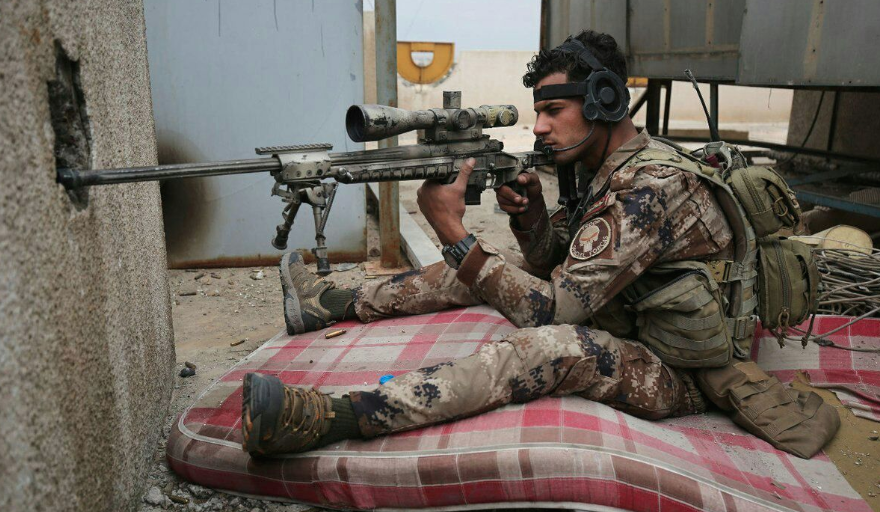
Figure 1.10 This ISOF sniper is armed with a Russian Orsis T-5000 bolt-action rifle, fitted with what appears to be a Russian Dedal-Night Vision DH 5-20x 56 mm optic. Note his headset and radio, allowing him to serve as “eyes and ears” for his chain of command.
Although the Orsis T-5000 can be fitted with a sound suppressor, there are scant photographs that show an ISOF sniper with a suppressor mounted. Of the photos that exist, it appears that the suppressors aren’t those typically observed with Orsis rifles, with some details they may have been produced in Iraq. Scopes currently fitted to the ISOF T-5000 rifles are Russian company Dedal-Night Vision DH 5-20x 56 mm models with a monolithic Picatinny mounting system. These scopes have 34 mm main body tubes and have the illuminated TMR reticle in the second focal plane. Traditionally the second focal plane has been favoured by hunters because first focal plane range estimation tools aren’t as necessary in the civilian hunting world. Dedal-NV appears to focus more on the civilian hunting night vision market and thus likely produces their products as such.
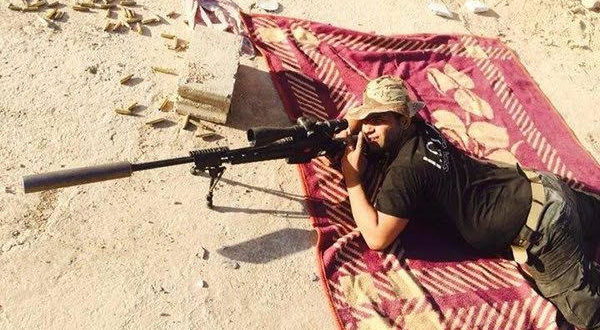
Figure 1.11 This image shows one of the few Orsis T-5000 rifles which have been observed with a suppressor fitted.
The largest problem that ISOF snipers face appears to be logistical in nature. Many of the rifles that snipers are using are surplus weapons and many may be worn beyond their original specifications, impeding accuracy and reliability. Parts such as trigger mechanism components, scopes, barrels, or bipods that should be easily replaceable are difficult, if not impossible, to replace because the force lacks an efficient supply chain management system. Complicating these issues, other items such as spotting scopes, tripods, laser range finders, and spare magazines are in short supply.
It also appears that the ammunition in use by ISOF snipers is almost entirely 7.62 x 51 mm ball rounds that are primarily intended for use in M240 GPMGs, rather than precision rifles. Access to precision ammunition such as the US Army’s M118LR cartridge would greatly aid accuracy and effectiveness. The M118LR is a 175 grain hollow point ‘boat tail’ bullet, specifically selected by the US Military for use with issue precision rifles, and made to much higher tolerances than standard ball ammunition.

Figure 1.12 This still, taken from a VICE news video report, shows an ISOF soldier unlinking 7.62 x 51 mm ball ammunition to be loaded into M14 EBR magazines. Although this won’t cause the weapon to malfunction, this ball ammunition is primarily intended for use in machine guns and not for precision rifles.
Technical Specifications – M24 Sniper Weapon System
Calibre: .308 (7.62 x 51 mm)
Overall length: 43″ (1092 mm)
Barrel length: 24″ (610 mm)
Weight (unloaded): 11 lbs (4.99 kg)
Feed device: 5-round internal magazine
Technical Specifications – M14 Enhanced Battle Rifle-Rock Island
Calibre: 7.62 x 51 mm
Overall length (stock extended): 46.0″ ( 1168 mm)
Overall length (stock collapsed): 40.2″ (1021 mm)
Barrel length: 22″ (559 mm)
Weight (unloaded): 11.15 lbs (5.06 kg)
Feed device: 5-, 10-, or 20-round detachable box magazine
Technical Specifications – Orsis T-5000
Calibre: .308 Winchester (7.62 x 51 mm)
Overall length (stock extended): 1210 mm
Overall length (stock collapsed): 960 mm
Barrel length: 660.4 mm
Weight (unloaded): 5.8 kg
Feed device: 5- or 10-round detachable box magazine
Photos taken from various ISOF social media channels and local news aggregator websites unless otherwise noted.
Remember, all arms and munitions are dangerous. Treat all firearms as if they are loaded, and all munitions as if they are live, until you have personally confirmed otherwise. If you do not have specialist knowledge, never assume that arms or munitions are safe to handle until they have been inspected by a subject matter specialist. You should not approach, handle, move, operate, or modify arms and munitions unless explicitly trained to do so. If you encounter any unexploded ordnance (UXO) or explosive remnants of war (ERW), always remember the ‘ARMS’ acronym:
AVOID the area
RECORD all relevant information
MARK the area from a safe distance to warn others
SEEK assistance from the relevant authorities


Pingback: Mk 14 Verbessertes Kampfgewehr – Enzyklopädie